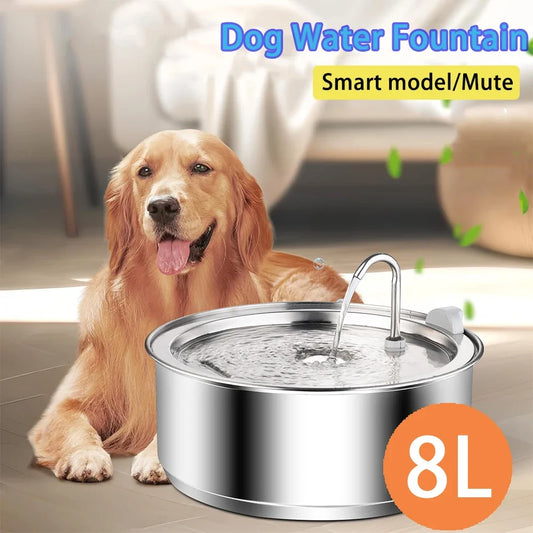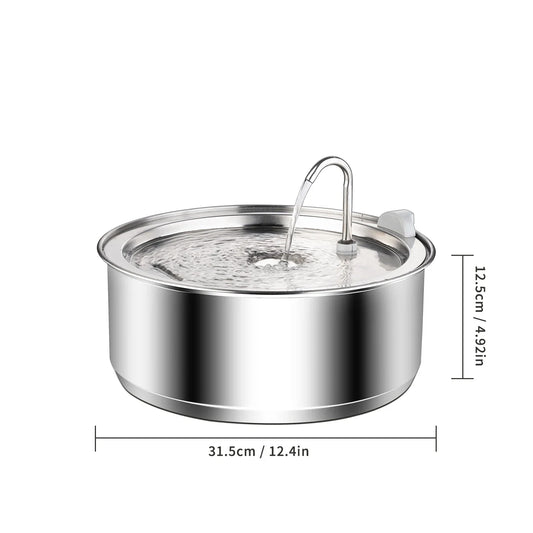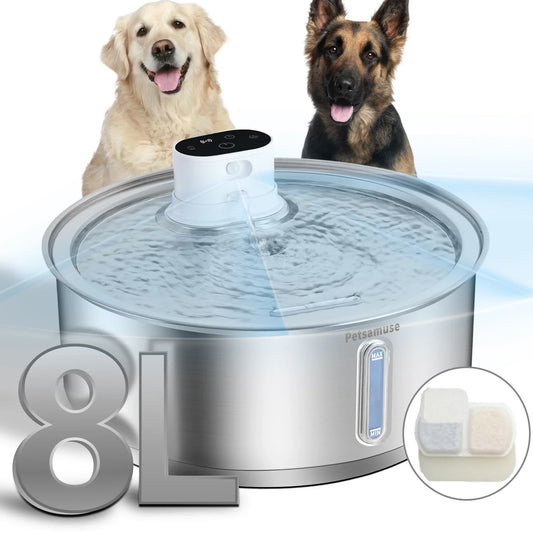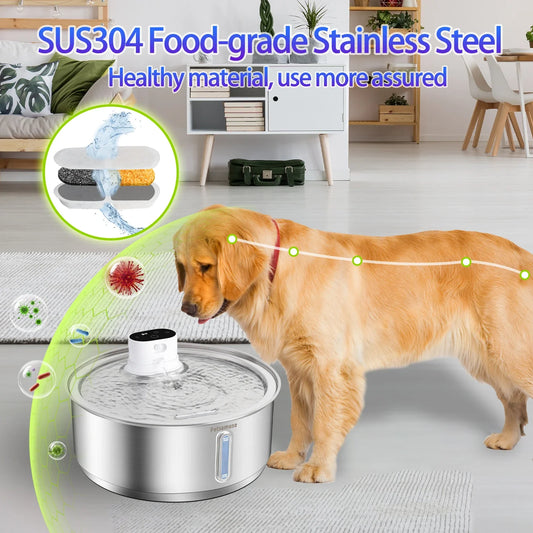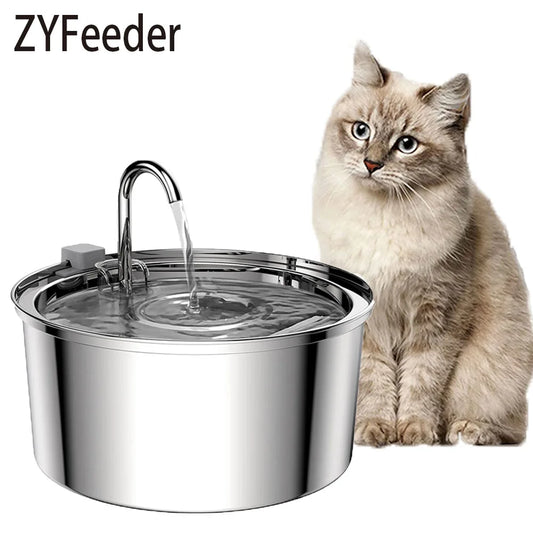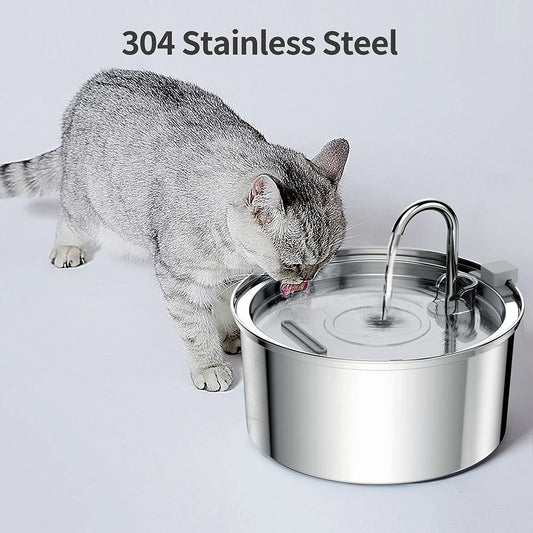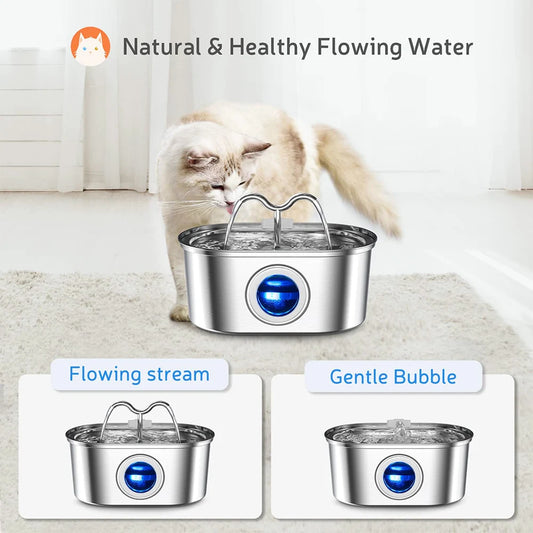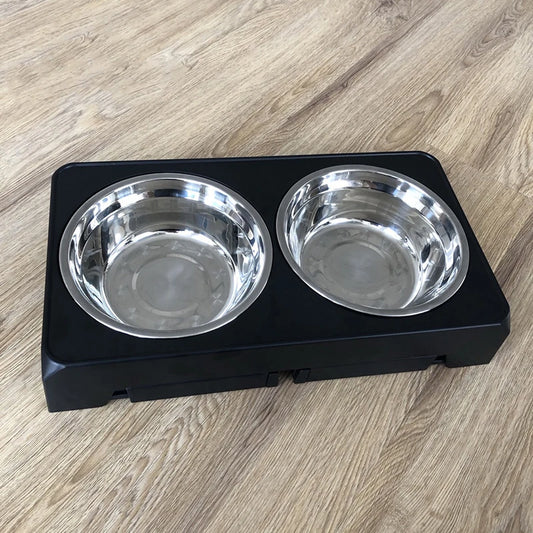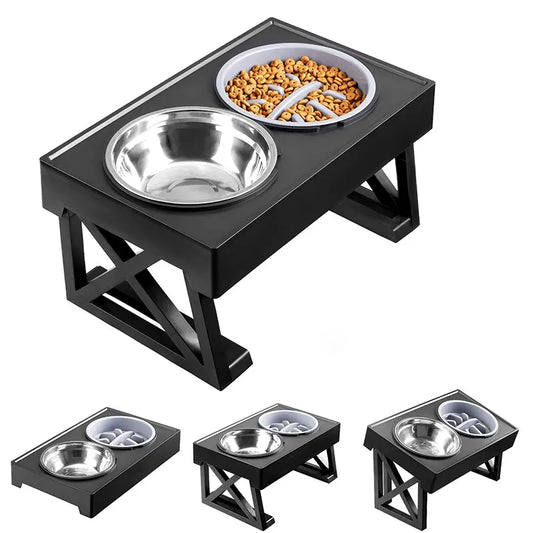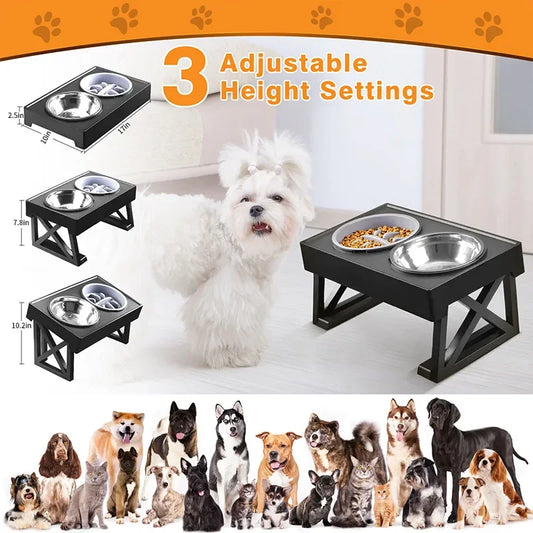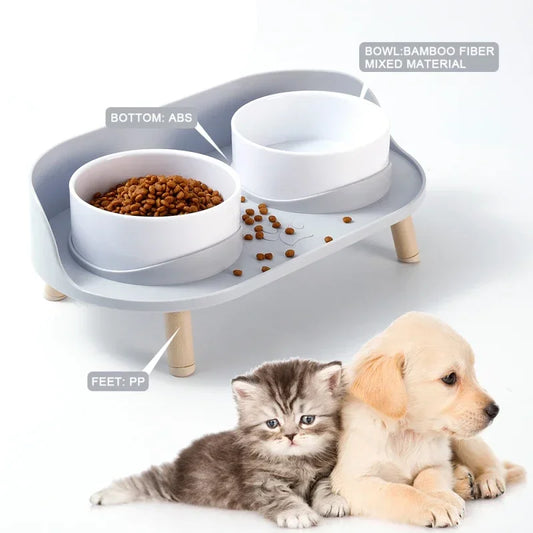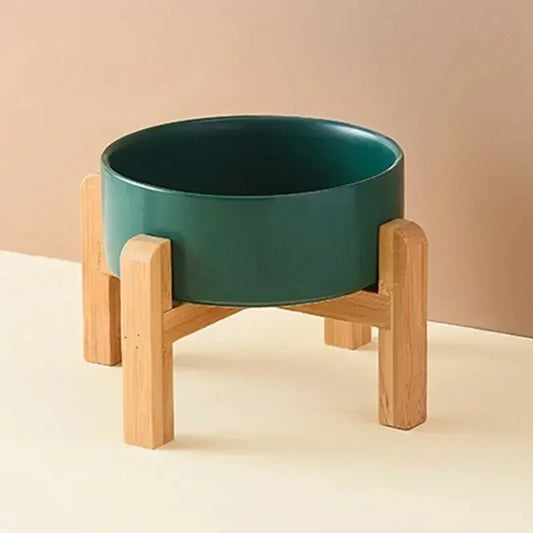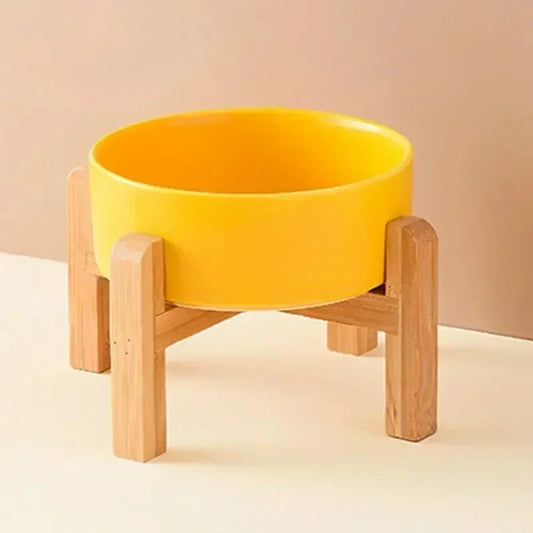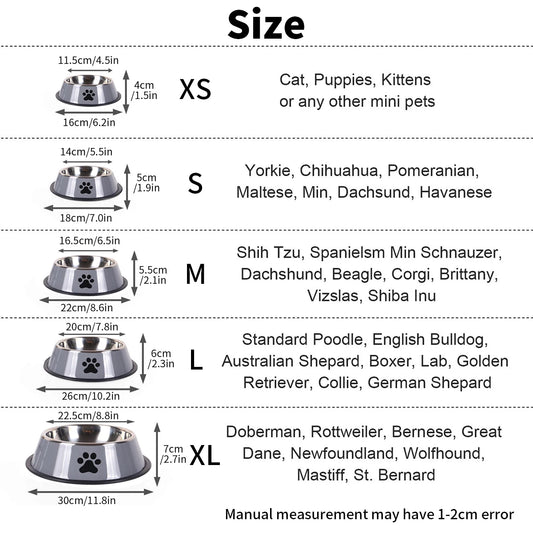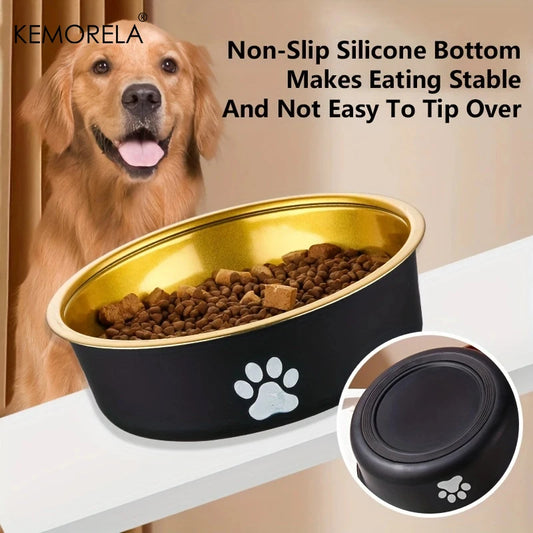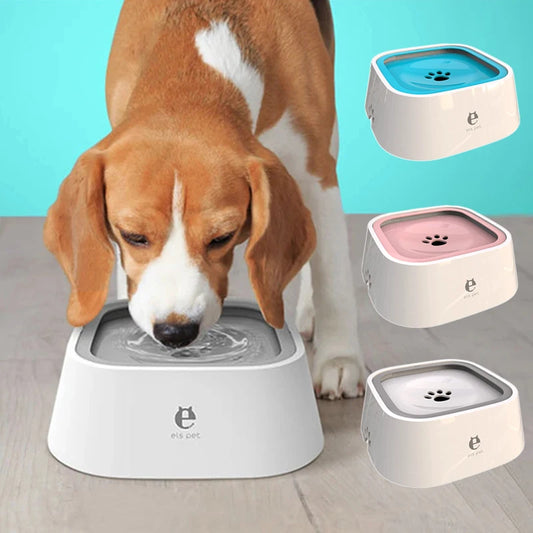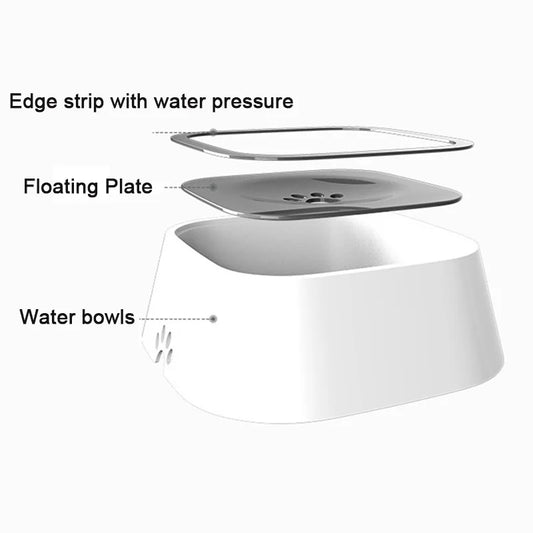Collection: Dog Water Bowls
Find the Perfect Dog Water Bowl for Your Furry Friend
Keeping your pup happy and hydrated has never been easier! Explore our range of dog water bowls, designed with both you and your dog in mind. Whether you need a spill-proof option for messy drinkers, a travel-friendly bowl for adventures, or something stylish for your home, we’ve got you covered. With durable, easy-to-clean designs in all shapes and sizes, there’s a dog water bowl that’s just right for your best friend.
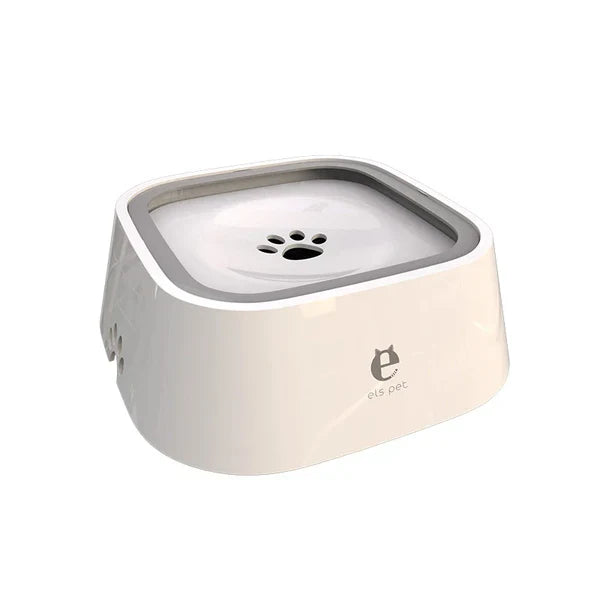
-
Dog Water Fountain Stainless Steel 8L Water Dispenser
Free ShippingRegular price From $121.95 AUDRegular priceUnit price / perSale price$169.95 AUDFrom $121.95 AUDSale -
Automatic Stainless Steel 8L Dog Water Fountain
Free ShippingRegular price From $20.95 AUDRegular priceUnit price / perSale price$29.95 AUDFrom $20.95 AUDSale -
Stainless Steel Pet Automatic Water Fountain
Free ShippingRegular price From $57.95 AUDRegular priceUnit price / perSale price$93.95 AUDFrom $57.95 AUDSale -
Automatic Fountain Drinking Bowl for Cat and Dog
Free ShippingRegular price From $68.95 AUDRegular priceUnit price / perSale price$110.95 AUDFrom $68.95 AUDSale -
Raised Stand with Double Food Water Bowls
Free ShippingRegular price From $68.95 AUDRegular priceUnit price / perSale price$111.95 AUDFrom $68.95 AUDSale -
Raised Bowls Stand For Dog and Cat
Free ShippingRegular price $65.95 AUDRegular priceUnit price / perSale price$106.95 AUD$65.95 AUDSale -
Pet Elevated Double Bowls Feeder
Free ShippingRegular price From $57.95 AUDRegular priceUnit price / perSale price$74.95 AUDFrom $57.95 AUDSale -
Elevated Ceramic Big Dogs Bowl with Wooden Stand
Free ShippingRegular price From $31.95 AUDRegular priceUnit price / perSale price$41.95 AUDFrom $31.95 AUDSale -
Ceramic Pet Bowl With Wood Stand
Free ShippingRegular price From $55.95 AUDRegular priceUnit price / perSale price$72.95 AUDFrom $55.95 AUDSale -
Automatic Water or Food Dispenser for Dogs and Cats
Free ShippingRegular price From $26.95 AUDRegular priceUnit price / perSale price$37.95 AUDFrom $26.95 AUDSale -
Automatic Feeder and Drinker Bowl
Free ShippingRegular price From $39.95 AUDRegular priceUnit price / perSale price$51.95 AUDFrom $39.95 AUDSale -
Stainless Steel Feeding Bowl for Cats and Dogs
Free ShippingRegular price From $17.95 AUDRegular priceUnit price / perSale price$21.95 AUDFrom $17.95 AUDSale -
Stainless Steel Dog Bowls and Water Fountains
Free ShippingRegular price From $21.95 AUDRegular priceUnit price / perSale price$29.95 AUDFrom $21.95 AUDSale -
Automatic Dog Water Bowl
Free ShippingRegular price From $33.95 AUDRegular priceUnit price / perSale price$47.95 AUDFrom $33.95 AUDSale
💧 Discover the Best Dog Water Bowls for Hydration, Health & Happiness
Looking for dog water bowls that do more than just hold water? Our premium collection of dog water bowls is designed to promote healthy hydration, prevent spills, and enhance your pet’s drinking experience. From temperature-controlled designs to eco-friendly materials, our bowls offer thoughtful solutions that many pet owners overlook but are essential for your dog's long-term health and well-being.
Whether you're at home, on a road trip, or exploring the great outdoors, our bowls ensure your furry friend stays hydrated, happy, and healthy.
✅ Why Choose Our Dog Water Bowls?
1. 💦 Hydration-Boosting Designs for Healthier Pets
- Shaped to encourage frequent drinking, supporting kidney function and overall health.
- Special options for flat-faced breeds like pugs and bulldogs, making it easier for them to drink comfortably.
- Elevated bowl sets to improve posture and reduce neck strain, especially for senior and large-breed dogs.
2. 🌡️ Temperature-Controlled for Year-Round Freshness
- Insulated dog water bowls keep water cooler for longer—essential in Australia’s warm climate.
- Heated bowl options prevent water from freezing during cold months, ideal for outdoor pets.
- Cooling gel bowls to ensure refreshing water, even after hours in the sun.
3. 🐕 Spill-Proof & Mess-Free for Active Pets
- Innovative non-spill designs perfect for playful drinkers and multi-pet households.
- Weighted and non-slip bases that stay put, no matter how enthusiastic your pup gets.
- Splash-guard rims reduce mess around feeding areas, keeping your home cleaner.
4. 🏆 Made from Safe, Durable & Hygienic Materials
- BPA-free stainless steel and ceramic options that resist bacteria and odors.
- Easy-to-clean, dishwasher-safe bowls designed to stay fresh and hygienic.
- Chew-resistant materials ensure long-lasting durability, even for the most active pups.
5. 🌿 Eco-Friendly Choices for Sustainable Living
- Dog water bowls made from recycled materials—perfect for eco-conscious pet parents.
- Designed to last, reducing waste and environmental impact.
- Stylish, minimalistic designs that complement modern homes while promoting sustainability.
6. 🚗 Portable, Collapsible & Travel-Ready
- Foldable, lightweight designs ideal for road trips, hikes, and camping.
- Durable, food-grade silicone that’s safe, flexible, and quick-drying.
- Travel-friendly options that provide a familiar drinking spot wherever your adventures take you.
7. 💡 Smart Hydration Solutions for Busy Lifestyles
- Automatic water dispensers for a continuous supply of fresh water.
- Large-capacity bowls perfect for multi-pet homes or when you’re out all day.
- Designed to reduce refilling frequency without compromising freshness.
8. 🐾 Sized for Every Breed & Lifestyle
- From compact bowls for small dogs to oversized options for large breeds.
- Custom sizes ensure your dog always has access to the right amount of water.
- Available in various colors and designs to suit your pet’s personality and your home décor.
🚚 Free Shipping on All Dog Water Bowls – Order Today!
Keep your pup hydrated, happy, and healthy with our top-rated collection of dog water bowls. Shop now at PetCareShed and enjoy fast, free shipping right to your doorstep!
👉 Upgrade Your Dog’s Hydration – Shop Dog Water Bowls Now!
🐶 Frequently Asked Questions About Dog Water Bowls at PetCareShed
💧 Find the Perfect Dog Water Bowl for Every Pup's Hydration Needs
At PetCareShed, we understand that a dog water bowl is more than just a container—it's a vital part of your dog's health, hydration habits, and overall well-being. Explore our expert answers to your most asked questions, optimized to help you choose the best dog water bowls for your furry friend.
1. What are the best dog water bowls available in Australia?
At PetCareShed, we offer an exclusive collection of the best dog water bowls in Australia, tailored for every breed, lifestyle, and home aesthetic. Our top picks include:
- Stainless Steel Bowls: Durable, rust-resistant, and bacteria-proof—perfect for daily use.
- Ceramic Bowls: Stylish and heavy enough to prevent tipping, ideal for indoor spaces.
- Automatic Water Dispensers: Ensure a constant flow of fresh water, great for busy pet owners.
- Cooling Bowls: Designed to keep water cooler for longer, essential for Australia's warm climate.
2. Where can I buy elevated dog water bowls in Australia?
You can find the finest elevated dog water bowls at PetCareShed, designed to:
- Improve posture and reduce neck strain in large and senior dogs.
- Promote healthier digestion by aligning the bowl with your dog’s natural feeding position.
- Enhance stability with anti-slip bases, making them perfect for energetic pups.
3. Are there any non-slip dog water bowls suitable for large breeds?
Absolutely! Our non-slip dog water bowls are crafted with large breeds in mind. They feature:
- Weighted bases and silicone grips to prevent sliding and spills.
- Extra-large capacities to reduce the frequency of refills for big drinkers.
- Chew-resistant materials built to withstand heavy use.
4. What are the benefits of using ceramic dog water bowls?
Ceramic dog water bowls at PetCareShed are a premium choice because they:
- Maintain cooler water temperatures, encouraging regular hydration.
- Resist bacterial buildup due to their smooth, non-porous surface.
- Add a touch of elegance to your home with designer finishes and colors.
5. Which dog water bowls keep water cool in hot Australian climates?
We offer cooling dog water bowls specifically designed for Australia's climate. These bowls:
- Feature double-walled insulation to keep water refreshingly cool for hours.
- Include freezable gel cores that maintain a lower water temperature without electricity.
- Are perfect for outdoor use, ensuring hydration during summer adventures.
6. Are there portable and collapsible dog water bowls for travel in Australia?
Yes! Our portable and collapsible dog water bowls are a must-have for Aussie adventurers. They are:
- Lightweight and foldable, fitting easily into travel bags or car compartments.
- Made from food-grade silicone, ensuring safety and easy cleaning on the go.
- Quick-drying and durable, perfect for hiking, camping, and road trips.
7. What are the top-rated automatic dog water dispensers available in Australia?
At PetCareShed, our automatic dog water dispensers are customer favorites because they:
- Provide a continuous flow of filtered, fresh water.
- Feature large reservoirs, ideal for multi-pet households or long workdays.
- Reduce manual refilling, saving you time while ensuring your dog's hydration.
8. Where can I find eco-friendly dog water bowls made from sustainable materials?
We believe in sustainability. Our eco-friendly dog water bowls are:
- Crafted from recycled materials, reducing your carbon pawprint.
- Durable and long-lasting, minimizing waste from replacements.
- Stylish and functional, proving that going green doesn't mean sacrificing quality.
9. Are there any dog water bowls that help prevent excessive gulping?
Yes! Our anti-gulping dog water bowls are designed to:
- Slow down drinking, preventing bloating and digestive discomfort.
- Feature internal ridges that control water flow for healthier hydration.
- Ideal for fast drinkers and breeds prone to water-related choking hazards.
10. What size water bowl is appropriate for my dog's breed and size?
Choosing the right size dog water bowl is essential. Here’s a quick guide:
- Small Breeds (e.g., Pugs, Dachshunds): 500ml–1L capacity.
- Medium Breeds (e.g., Beagles, Cocker Spaniels): 1L–2L capacity.
- Large Breeds (e.g., Labradors, German Shepherds): 2L+ capacity for all-day hydration.
💡 Pro Tip: Always choose a bowl that holds at least one day’s worth of water for your dog’s size to promote regular drinking without constant refilling.
Blog posts
View all-

Meet the Norwegian Lundehund: Australia’s Rares...
The Norwegian Lundehund stands as one of the most distinctive and seldom-seen dog breeds in Australia. With its roots stretching back to the rugged coastal cliffs of Norway, this breed...
Meet the Norwegian Lundehund: Australia’s Rares...
The Norwegian Lundehund stands as one of the most distinctive and seldom-seen dog breeds in Australia. With its roots stretching back to the rugged coastal cliffs of Norway, this breed was once relied upon by Scandinavian fishermen for its remarkable ability to scale steep rocks and retrieve puffins—a vital source of food. What sets the Lundehund apart from every other breed is its remarkable anatomical adaptations: six toes on each foot, double-jointed flexibility, and the capacity to close its ears to protect against water and debris.
-

Best Collars for Dogs That Pull: Vet-Approved P...
Key Takeaways Dogs that pull on the lead may suffer from neck strain or behavioural issues if the wrong collar is used. Vet-approved collars like martingales and head halters offer...
Best Collars for Dogs That Pull: Vet-Approved P...
Key Takeaways Dogs that pull on the lead may suffer from neck strain or behavioural issues if the wrong collar is used. Vet-approved collars like martingales and head halters offer more humane and effective control. Tools alone don’t solve pulling — they must be used with proper training and positive reinforcement. Australian pet owners should be aware of state-specific laws around the use of corrective collars like prong or shock collars. Choosing the right collar depends on your dog’s size, strength, and temperament — and not all collars work for every dog. This guide helps you understand which collars are safest, most effective, and recommended by Australian vets and trainers. Introduction Pulling on the lead is one of the most common complaints from dog owners. Whether it’s a young puppy excited to explore the world or a large dog that simply doesn’t know how strong it is, leash pulling can make daily walks stressful — even dangerous. For Australian pet owners, especially those walking in busy suburbs, parks, or bushland trails, having control of your dog is essential. But the solution isn't just about brute strength — it’s about choosing the right tools that promote comfort, safety, and better behaviour. In this article, we explore the best collars for dogs that pull — those recommended by veterinarians and animal behaviour experts — and explain how to use them effectively. We'll also guide you through what to avoid, what the law says in Australia, and how to pair the right collar with proven training techniques. Why Dogs Pull on the Leash Understanding why your dog pulls is the first step in fixing it. Contrary to popular belief, pulling isn’t necessarily about dominance or defiance. It’s often more about excitement, poor leash manners, or a simple case of what gets rewarded, gets repeated. Common Reasons Dogs Pull: Excitement or overstimulation: New smells, sights, and sounds make walks thrilling. Lack of early leash training: Dogs not trained as pups may never learn proper walking etiquette. Reinforced pulling: If pulling gets your dog where it wants to go, it learns to repeat it. Breed traits: Working breeds like Huskies, Staffies, and Kelpies often pull more due to strong drive. Infrequent walking: Dogs that only walk occasionally tend to be more energetic and harder to manage on leash. 🗨️ “Dogs pull because it works. If they get to a smell or a person faster, the behaviour is reinforced.” — Dr. Kate Mornement, Australian Animal Behaviourist Risks of Using the Wrong Collar on a Dog That Pulls Using an inappropriate collar on a pulling dog isn’t just ineffective — it can be harmful. Pulling with a regular flat collar or choke chain can result in long-term damage or distress. Potential Risks Include: Neck strain and tracheal injury: Especially dangerous for small breeds and brachycephalic dogs. Increased anxiety or aggression: Painful collars can create negative associations with walking. Escape risk: Some collars are easier for dogs to slip out of when pulling. Legal implications: Certain collars, like prong and shock collars, are regulated or banned in parts of Australia. ⚠️ According to the RSPCA, aversive training tools like choke or prong collars “can cause pain and fear, and may lead to increased aggression and behavioural issues.” (source). What Vets Recommend: Principles Behind Safe Collar Use Veterinarians and animal behaviourists emphasise humane training tools that promote trust and reduce stress. This aligns with what’s known as "force-free training", which avoids pain or intimidation. Key Principles Vets Emphasise: Use collars that minimise pressure on the neck. Ensure the collar fits properly — not too tight, not too loose. Choose materials that don’t cause rubbing or irritation. Combine tools with positive reinforcement (treats, praise). Transition to simpler collars as the dog becomes better trained. 🗨️ “The most effective tools are the ones that make walking a positive experience for both dog and owner.” — Dr. Cam Day, Veterinary Behaviourist (Australia) Top Vet-Approved Collars for Dogs That Pull Not all collars are created equal. Below are the top types of collars (and alternatives) that vets and trainers frequently recommend. 1. Martingale Collars Also called limited-slip collars, martingales tighten slightly when the dog pulls — but without the harsh “choking” action of a traditional slip lead. Best For: Dogs with narrow heads (e.g., Greyhounds, Whippets) Dogs that slip out of flat collars Pros: Offers gentle correction Prevents slipping out Recommended by behaviourists Cons: Still applies pressure to neck — not suitable for heavy pullers ✅ RSPCA Australia supports martingale collars as a safer option for dogs that pull, especially when used alongside training. 2. Head Collars (e.g., Halti, Gentle Leader) These collars fit around the dog's snout and gently guide the head — and therefore the body — making pulling less effective. Best For: Large, strong dogs Reactive dogs needing more directional control Pros: Immediate reduction in pulling Helps prevent lunging Cons: Some dogs resist wearing it at first Requires acclimation and proper fit 🗨️ “Used correctly, head halters can be highly effective. But misuse can cause neck strain, so training is essential.” — Dr. Jo Righetti, Pet Behaviour Consultant 3. Front-Clip Harnesses (Not collars, but often preferred) Harnesses like the PetSafe Easy Walk or Rogz Control Harness offer an alternative by redistributing pressure across the dog’s chest rather than its neck. Best For: Dogs that pull heavily or have respiratory issues Owners who struggle with leash strength Pros: Safer than collars for heavy pullers Reduces pulling through redirection Popular in Australian obedience circles Cons: Can cause rubbing if poorly fitted May not deter very determined pullers 🐾 Note: In many Australian vet clinics, front-clip harnesses are the go-to recommendation for large breeds and rescue dogs. 4. Flat Collars (for well-trained dogs only) Simple and comfortable, these collars are suitable once your dog is trained to walk calmly. Best For: Dogs with reliable leash manners Everyday ID tag wear Caution: Never rely on a flat collar alone if your dog is still learning not to pull. Collars to Avoid for Pulling Dogs Some collar types are outdated, inhumane, or outright dangerous — especially when used incorrectly. 1. Choke Chains Designed to tighten around the neck when the dog pulls. Once popular, now widely criticised. ❌ “We do not recommend choke chains under any circumstances.” — Australian Veterinary Association 2. Prong Collars Metal collars with inward-facing prongs that dig into the skin when pulled. Banned in Victoria and under review in other states. May cause behavioural fallout, fear, and aggression. ⚠️ The RSPCA and Pet Industry Association of Australia oppose their use. 3. Shock Collars (E-collars) These collars deliver electric stimulation to “correct” behaviour. Legal status varies across Australia (banned in some states). Not recommended by any major Australian veterinary body. “Using pain to control behaviour is not only unethical — it doesn’t work long-term.” — Dr. Katrina Warren, TV vet and author Choosing the Right Collar: What to Consider Every dog is different, and the best collar for one may not be suitable for another. To select the right collar for a dog that pulls, you’ll need to assess their physical characteristics, behaviour, and environment. Factors to Consider: Size and Breed Smaller breeds (e.g., Maltese, Cavoodles) may need softer materials and minimal pressure around the neck. Larger or working breeds (e.g., Kelpies, Labradors) may benefit from front-clip harnesses or head collars due to stronger pulling. Pulling Intensity Mild pullers might do well with a martingale. Strong pullers may require a head halter or harness for safe control. Temperament Anxious or nervous dogs may become reactive with restrictive collars. Confident dogs may test limits and need something more secure. Walking Environment Suburban footpaths vs bush trails vs beach walks—some collars handle moisture or rough terrain better. Training Level Dogs early in training need more control. Trained dogs may graduate to a padded flat collar. How to Fit a Collar Properly Poor fit is a common issue that can make even the safest collar ineffective—or harmful. General Fitting Guidelines: The 2-Finger Rule: You should be able to slide two fingers comfortably between the collar and your dog’s neck. Measure Before You Buy: Use a soft measuring tape to measure your dog’s neck at its base. Watch for Signs of Discomfort: Rubbing or hair loss Coughing or gagging on walks Frequent pawing at the collar Slipping out or constant re-adjustment Tips for Head Collars and Harnesses: Ensure the nose loop (for head collars) isn’t too tight — your dog should be able to open their mouth. Chest harnesses should sit snugly on the breastbone, not press against the armpits. 🗨️ “A poor-fitting collar can lead to discomfort, skin damage, or worse — especially for dogs that pull hard.” — Dr. Melissa Meehan, Vet & Behavioural Consultant Training Tips for Dogs That Pull A collar is just a tool. To see lasting results, pair it with consistent training that encourages your dog to walk calmly on a lead. Foundational Training Techniques: Reward-Based Walking: Reward your dog with treats or praise when they walk beside you without pulling. Stop walking immediately when they pull — teach them pulling gets them nowhere. Redirection: Use a cue like “Let’s go!” and change direction often to keep your dog focused. Short, Frequent Walks: Consistency is better than duration. Several short walks help reinforce good habits. Engage a Certified Trainer: Seek a professional who uses positive reinforcement methods. Avoid trainers who rely on punishment-based tools like prong or shock collars. 🔗 For trainer directories, visit: Delta Institute (Australia) or PPGA Australian Perspective: What Local Vets and Laws Say Australia has some of the strictest animal welfare laws in the world, particularly concerning aversive training tools. Legal Status of Collars in Australia (as of 2025): Prong Collars: Banned in VIC; under review in NSW and ACT. Shock Collars: Banned in parts of SA and WA. Choke Chains: Not illegal but strongly discouraged by vets and the RSPCA. Martingale, Head Collars, and Front-Clip Harnesses: Fully legal and recommended. Trusted Brands Available in Australia: Rogz Utility Control Collar (available at PetCareShed) Halti Optifit Headcollar PetSafe Easy Walk Harness Black Dog Wear Training Gear (Australian-made) 🗨️ “Responsible collar use means choosing what’s humane and effective. Australia leads the way with a shift to force-free training methods.” — Association of Pet Dog Trainers Australia Expert Commentary and Vet Insights Multiple Australian professionals advocate for smarter collar choices based on evidence, not tradition. 🗨️ “We’re seeing a move away from force-based collars in vet clinics. Behavioural injuries are real, and prevention starts with the right gear.”— Dr. Bronwyn Hodgson, Sydney Animal Hospital 🗨️ “Using a collar that aligns with how a dog thinks and learns is more powerful than forcing control.”— Stephanie McColl, Delta Accredited Trainer, Melbourne 🗨️ “Insurance claims related to neck injuries are rising in dogs that wear outdated collars. Choose gear that protects, not punishes.”— PetSure Australia 2024 Industry Report Related Products from PetCareShed At PetCareShed, we stock safe and trusted collars recommended by vets and trainers: Rogz Control Collar with Locking Buckle Halti Headcollars and Training Leads PetSafe Easy Walk Harness – Front Clip Martingale Training Collars in Soft Nylon Comfort-Fit Flat Collars for Trained Dogs ✅ Free shipping across Australia💬 Need help choosing? Contact our product specialists. Frequently Asked Questions Are no-pull collars safe for puppies? Yes, many are — especially front-clip harnesses and head halters. Always introduce them slowly and pair with positive training. What if my dog still pulls with a no-pull collar? Consider a professional trainer. No collar will work without consistent reinforcement and behaviour shaping. Can I use a training collar with a retractable leash? It’s not recommended. Retractable leashes encourage pulling and reduce your control — especially with corrective tools. How long does it take to train a dog to stop pulling? This depends on age, breed, and consistency. Some dogs respond in days, others may take weeks to months of practice. Are head halters cruel or uncomfortable? Not when fitted properly. They’re like a horse halter — they guide, not punish. Always supervise use.
-

Abyssinian Cats: Active and Intelligent Felines
The Abyssinian cat is a breed that captivates hearts and minds alike, known for its remarkable intelligence, boundless energy, and striking appearance. Often described as the "athlete" of the feline...
Abyssinian Cats: Active and Intelligent Felines
The Abyssinian cat is a breed that captivates hearts and minds alike, known for its remarkable intelligence, boundless energy, and striking appearance. Often described as the "athlete" of the feline world, the Abyssinian is more than just a pretty face; it is a companion that brings adventure, joy, and a touch of the exotic into the homes of Australian pet lovers.

